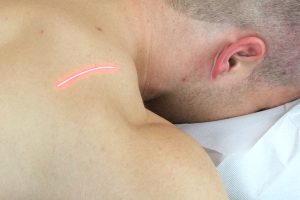
I’ve been actively involved in fitness for two years. About 6 months ago, I started experiencing pain and discomfort in my right shoulder. Sleeping on the right side became difficult, and some movements were restricted. An ultrasound of the right shoulder revealed “point-like calcifications at the insertion of the supraspinatus tendon into the greater tubercle with surrounding edema and a small amount of effusion in the subacromial-subdeltoid bursa, along with a discontinuous, hyperechoic tendon – consistent with a partial rupture of the mentioned tendon.
The biceps brachii tendon is of heterogeneous structure with minor linear effusions at the insertion site and more distally toward the myotendinous junction, indicating an incipient lesion of the mentioned tendon. I’m wondering what to do and which direction to take since I’m employed and actively involved in fitness?
In simplified terms, this is a cumulative damage to two tendons in the shoulder due to overuse. In such cases, it’s usual for us at Scipion to perform an ultrasound of the other shoulder to determine if there is a similar injury there, which may not be symptomatic. This is followed by a thorough examination of the neck, thoracic spine, and the entire shoulder girdle, as well as the scapulothoracic rhythm, to determine signs of restricted mobility, muscle imbalances in the form of local weakness or poor flexibility, and other disorders that may be causing pain. We also conduct a detailed “training process diagnostics” to get an insight into possible causes of damage within the training regimen. If the results of the examination and available diagnostic procedures are clear, we proceed to therapy. If there are uncertainties, additional diagnostics are indicated (most commonly MRI imaging). Pain therapy may involve various physiotherapy procedures, but it mostly relies on manual methods. Once the pain is alleviated, we provide precise instructions for modifying the training and teach the patient how to perform additional exercises to prevent recurrence of symptoms.
